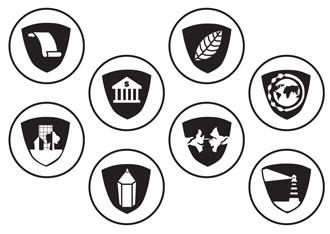Over the past 20 years disasters have affected 4.4 billion people, caused $2 trillion of damage and killed 1.3 million people. These losses have outstripped the total value of official development assistance in the same period. Natural disasters disproportionately affect people living in developing countries and the most vulnerable communities within those countries. Over 95 per cent of people killed by natural disasters are from developing countries (Extreme Weather and Natural Disasters, 2012).
In the period 2000-2009 as many as 85 per cent of the people reported affected by disasters belonged to the Asia-Pacific Region, where Australia provides most of it’s international development assistance (International Federation of the Red Crescent, World Disaster Report, 2010).
Much can be done to minimise the impacts of natural disasters. The Australian Government recognises that in order to be sustainable, key sectors of development—such as health, education, water and sanitation, and food security—must ensure that their activities and infrastructure are disaster-resilient.
Australia, along with most of our developing country partners, is a signatory to the Hyogo Framework for Action 2005–2015 Building the resilience of nations and communities to disasters, the international blueprint for disaster risk reduction. It highlights that disaster risk reduction, along with climate change adaptation, is an essential aspect of sustainable development.
What is Disaster Risk Reduction?

Disaster risk reduction (DRR)
There is no such thing as a 'natural' disaster, only natural hazards.
Disaster Risk Reduction (DRR) aims to reduce the damage
caused by natural hazards like earthquakes, floods, droughts and
cyclones, through an ethic of prevention.
Disaster risk reduction is about choices.
Disaster risk reduction is the concept and practice of reducing disaster risks through systematic efforts to analyse and reduce the causal factors of disasters. Reducing exposure to hazards, lessening vulnerability of people and property, wise management of land and the environment, and improving preparedness and early warning for adverse events are all examples of disaster risk reduction.Disaster preparedness
Recent disasters in Haiti and Pakistan in 2010 showed the need to “use knowledge, innovation and education to build a culture of safety and resilence at all levels” as articulated in the Hyogo Framework for Action 2005-2015.
The role of education for disaster risk reduction strategies can thus
be presented according to three types of activities: 1) Save lives and
prevent injuries should a hazardous event occur, 2) Prevent
interruptions to the provision of education, or ensure its swift
resumption in the event of an interruption, and 3) Develop a resilient
population that is able to reduce the economic, social and cultural
impacts should a hazardous event occur.
Education for Disaster Risk Reduction (DRR) takes
into account the relationships between society, environment, economy,
and culture and their impacts. It also promotes critical thinking and
problem-solving as well as social and emotional life skills that are
essential to the empowerment of groups threatened or affected by
disasters. ESD, through its interdisciplinary and holistic
approach to learning, helps create resilient societies. It encourages a
long-term perspective in decision-making processes, critical thinking,
and holistic and innovative approaches to problem-solving. ESD,
therefore, contributes to DRR while DRR increases the relevance and the
quality of education in disaster-prone areas.
ESD and Education for Disaster Risk Reduction
UNESCO
gives specialized policy advice and technical assistance to affected
governments, UN agencies and non-profit organizations in reactivating
education system in post-disaster situations. It also plays a catalytic
role, including advocacy, networking and participation in inter-agency
activities, to ensure that educational needs are met in post-disaster
settings. It is actively involved in post-disaster programmes such as
the Myanmar Education Recovery Programme (MERP) in the Asia-Pacific
region.
UNESCO has been playing a valuable role within the
UN International Strategy for Disaster Reduction (ISDR) Thematic
Platform on Knowledge and Education. With its ISDR partner agencies,
UNESCO promotes the integration of Disaster Risk Reduction in national
educational plans, school curricula and national strategies, as well as
supporting natural disaster preparedness. UNESCO has promoted Education
for Disaster Risk Reduction at a number of international events,
including the workshop on “ESD and disaster risk reduction: building
disaster-resilient societies”, organized during the 2009 Bonn World
Conference on ESD.



Tidak ada komentar:
Posting Komentar